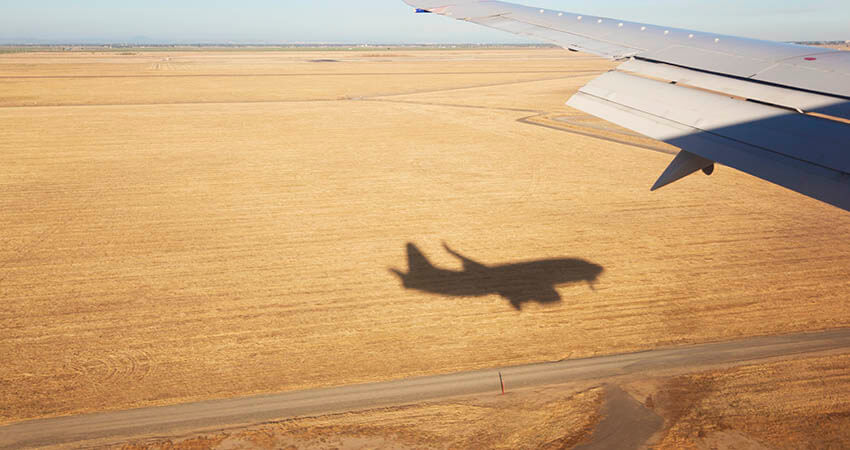Don’t shut down, even if the engine does.
Although emergency situations of any kind aren’t easy, the scariest of all may be loss of power during flight. Keep reading to learn how to mentally prepare and train for engine failure.
Psychological factors for pilots.
Not overreacting or, worse still, freezing during an emergency scenario is difficult, but necessary for safe operations with loss of engine power. An overreaction or improper procedure may further degrade the situation, as will freezing or otherwise not reacting to the necessary level. Keeping yourself collected, clearing your mind, and remembering your training are the best things you can do in these scenarios. To learn more on staying calm during emergency situations, read our blog here.
What you should do.
First, if you haven’t yet reached proper glide attitude when the power goes out, the safest bet is to attain proper glide attitude and slow to the best glide or minimum sink. This ensures you’ll have the maximum range or time for decision making that the particular situation calls for.
Second, find the best place to land. If failure happens after takeoff, this decision should be made prior to takeoff whether that is turning around to the airfield or finding an open area straight ahead. Remember to land into the wind when possible. If at cruise, know where the nearest suitable airport is (that may be behind you); choose the airport that has the appropriate facilities you may need, such as fire and rescue.
Lastly, if time allows, reference and complete the emergency checklists. It is important to reach glide speed set the proper speed and find a landing position first so you can safely complete the checklists.
Remember an emergency calls for the A-B-Cs: Airspeed, Best place to land, and Checklist (if able).
Note: Always follow recommended procedures in the Flight or Operating Manual for the particular aircraft when encountering an emergency scenario.

Follow the rules and good things will happen.
In August of 2013, two young pilots in Queensland, Australia beautifully landed their aircraft following an engine failure during a training flight. At this time, the pilots, 22 year old flight instructor Doug Field and 18 year old student pilot Josh Matica, only had mere minutes to react and try to safely land. With limited open space and many obstacles, the young men made an emergency call to the tower and were able to safely get on the ground despite narrowly avoiding a pump house and ending up in a barbed wire fence.
The young pilots gained much praise for their cool exterior and decisiveness. The company that owns the aircraft, Pathfinder Aviation, soon released a statement saying it was a “textbook execution of the forced landing procedure.” Airline Captain Michael Greig said, “Those are the sort of guys you want sitting next to you in the seat when something does go wrong because you know how they’re going to react – they’re going to be calm, methodical and do the job at hand at the time.” Read more on these courageous pilots and watch them land the aircraft in the ABC news article.
Emergency situations are never easy, and loss of engine power is the last emergency scenario a pilot wants to encounter, but if you keep your head and remember your training, the outcome can be just as smooth as if you planned it.
Needing recurrent aircraft training to brush up on emergency procedures? CTS offers a wide variety of airplane and helicopter subjects. Don’t see your particular aircraft on the list? Contact content@www.ctsys.com and we can work with you on creating a new subject.
RELATED READING
RELATED CTS TRAINING









